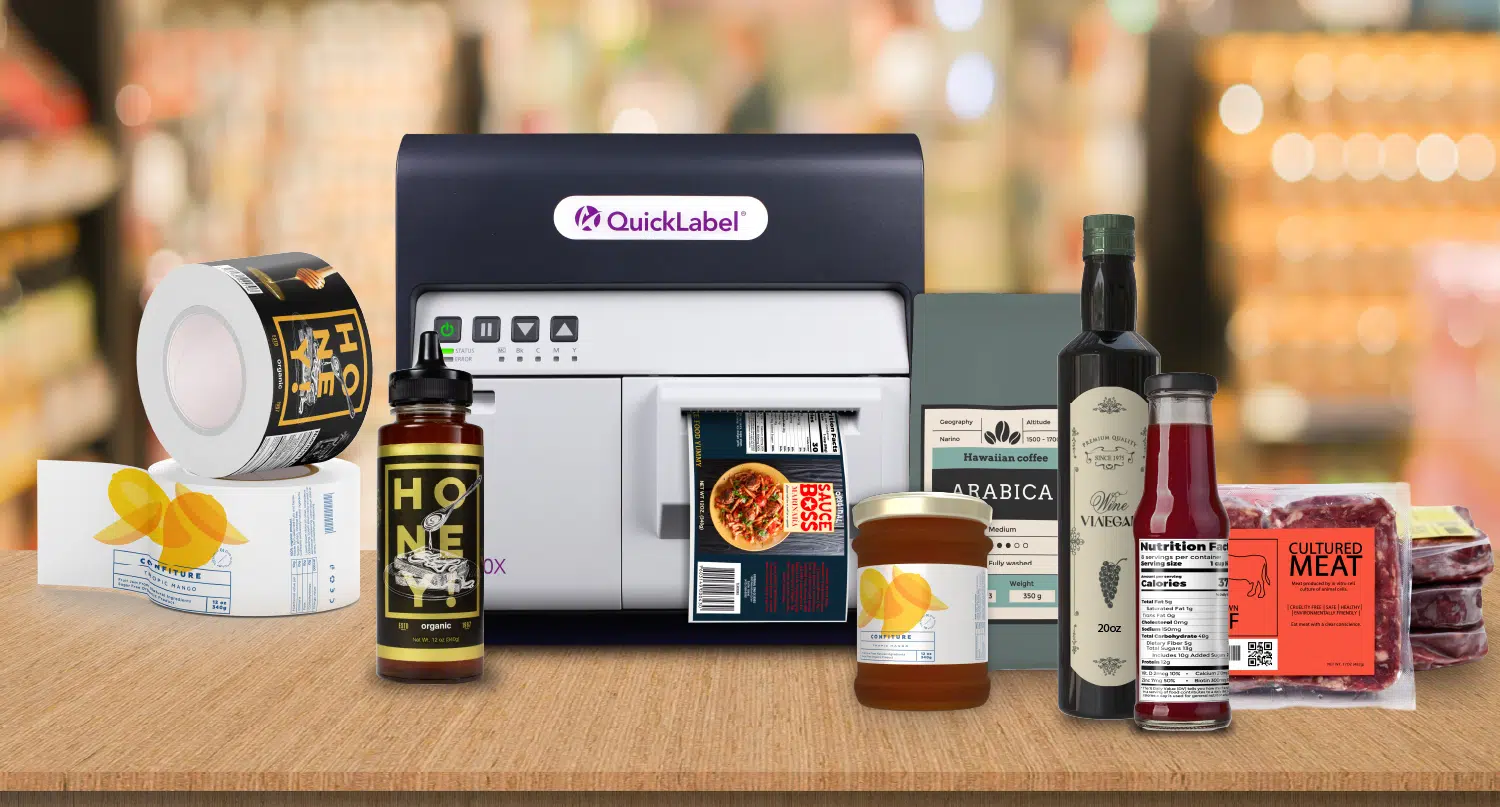
A product’s label is more important than ever in the food industry. It carries more responsibility and serves more roles than ever before. It’s, first and foremost, the face of the brand and the product. It must meet complex and evolving regulatory requirements while making a strong first impression on consumers. It has to endure handling, packaging, shipping, storage, temperature extremes, and everyday use. And its printing process must support production efficiency. That’s a lot to ask of just a few square inches of paper or film.
As food manufacturers, packaging teams, and private-label producers fight for attention on increasingly crowded retail shelves and race ahead of evolving compliance rules, label production managers must master design strategy and production execution.
Innovative strategies from design to production will bring all these challenges together to create food labeling that looks great and gets all the jobs done.
First, Nail the Basics for Compliance and Clarity
Before creativity comes compliance. Every food label must meet federal (and often international) regulations. That means the basics must be in place, and they all must be right.
The label must clearly show:
- What the product is
- How much of it is there
- What’s in it (including allergens)
- Who made it
- When to use it by
All of this needs to be legible in a range of handling and storage conditions. Think refrigerated deli items, frozen meals, or snack packs on warm retail aisle endcaps. The FDA even sets font size and
contrast rules to ensure labels are readable.¹ So, such design details as font choice and layout aren’t just design decisions. They’re strategic ones.
Design for the Aisle and the Supply Chain
A well-designed label grabs attention, builds trust, and reinforces brand identity. But it also needs to work in the real world of high-speed and potentially rough and tumble world of packaging lines and warehouse scanning.
Here’s what great label design does:
- Highlights what matters most (product name, key nutrition claims).
- Keeps it clean and straightforward. Too much clutter overwhelms and slows decision-making.
- Maintains consistency across all SKUs to build brand recognition.
- Fits production processes in addition to marketing goals.
It’s essential to design with the printing workflow in mind. To avoid time- and cost-consuming adjustments later, make sure to know the label sizes, materials, and print methods needed to meet all challenges and goals ahead of time.
Choose Label Materials That Can Handle the Job
Not all labels (and label materials) are created equal. Food products face a wide range of environmental challenges, including heat, cold, condensation, oil, and abrasion, to name a few. This is why material choice is critical.
When picking label stock:
- Make sure the adhesive fits the job (e.g., freezer-grade vs. removable)
- Choose a face stock that can stand up to the product’s conditions (paper’s fine for dry goods, but poly is better for moisture or grease)
- Pick a finish that aligns with both branding and printing tech (matte, gloss, or thermal)
AstroNova’s team often recommends testing materials using on-demand printing so designers and label managers can validate performance in real-world conditions before committing to a large run.
Go Digital for Flexibility and Speed
Food trends shift fast. Regulations change. Retail partners request private-label variants. In these environments, in-house digital label printing gives food producers the edge.
Digital inkjet printers like AstroNova’s QuickLabel®, TrojanLabel® and AstroJet® systems offer:
- Short-run and just-in-time printing for seasonal, regional, or limited-release items
- Full-color labels with professional-quality graphics
- Reduced inventory of preprinted labels (and less waste when designs change)
- Streamlined workflows that cut down on manual steps
Moreover, they also support label formats that meet updated FDA rules and multilingual markets.
Labeling is a Critical Component of Quality Strategy
Although labeling is often the last step before shipping, it’s one of the most critical. Mislabeling is one of the top causes of food recalls in the U.S.² This is why quality control must be built into the labeling process.
Best practices include:
- Automated label verification tools
- Barcodes or QR codes for traceability
- Centralized version control for label files
- Regular operator training on labeling systems
Bringing together the right technology, materials, and processes helps ensure product labels are accurate, compliant, and consistent every time.
Final Thoughts
An excellent food label isn’t just a pretty face or a finishing touch. A food label is a frontline tool. It informs, persuades, protects, and performs. Combining innovative design with thoughtful production strategies enables food brands to create labels that check every box: compliance, efficiency, customer-catching design, and durable usability.
With AstroNova’s professional food product labeling solutions, food producers connect design and production to get food labeling right so that every label delivers.
—
Sources:
¹ U.S. Food and Drug Administration. A Food Labeling Guide: Guidance for Industry.
² U.S. Department of Agriculture. Annual Summary of Food Recalls.




